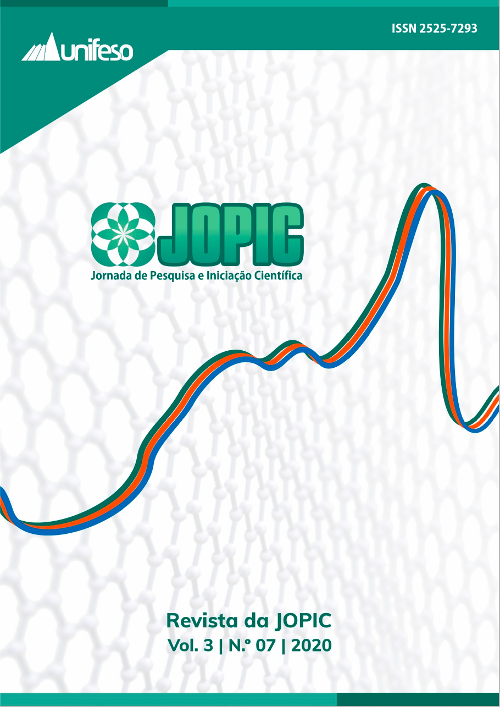CARACTERIZAÇÃO BIOMOLECULAR DO MICROBIOMA BACTERIANO E FÚNGICO DA CONJUNTIVA OCULAR DE EQUINOS SAUDÁVEIS
Palavras-chave:
Microbioma ocular, Diagnóstico molecular, EquinosResumo
O conhecimento do microbioma da conjuntiva ocular de equinos em condições normais é de extrema importância não só para a própria espécie pertencente ao microambiente estudado, mas também para se traçar estratégias de prevenção da dispersão desses microrganismos para ambientes não usuais, tais como dispersão interespécies ou interambiental. O objetivo deste estudo foi avaliar as espécies de bactérias e fungos que se encontram na conjuntiva ocular de equinos saudáveis, através do método de sequenciamento genético de nova geração (NGS). Foram selecionados 20 cavalos, de ambos os sexos e diferentes faixas etárias, isentos oftalmopatias. A identificação biomolecular das espécies bacterianas e fúngicas foi realizada por meio de sequenciamento genético 16S rRNA. Foram identificadas um total de 111 espécies de bactérias, pertencentes a 56 gêneros distintos, sendo que destes, os identificados com maior prevalência foram: Nicoletella sp. (69,880bp) e Brevibacterium sp. (23,097bp). A análise fúngica permitiu a identificação de 27 gêneros e dentre estes, os principais gêneros fúngicos identificados foram Aspergillus spp. e Penicillium spp. Estes resultados concordam, em grande parte, com a literatura existente. No conhecimento dos autores, este é o primeiro estudo que objetivou a caracterização biomolecular do microbioma ocular de equinos saudáveis no Estado do Rio de Janeiro.
Referências
CAMACHO, C. et al. BLAST+: architecture and applications. BMC Bioinformatics, v. 10, n. 1, p. 421, dez. 2009.
CAPORASO, J. G. et al. Global patterns of 16S rRNA diversity at a depth of millions of sequences per sample. Proceedings of the National Academy of Sciences, v. 108, n. Supplement_1, p. 4516–4522, mar. 2011.
DESANTIS, T. Z. et al. Greengenes, a Chimera-Checked 16S rRNA Gene Database and Workbench Compatible with ARB. Applied and Environmental Microbiology, v. 72, n. 7, p. 5069–5072, jul. 2006.
HENDRIX, D. V. H. et al. Corneal stromal abscesses in the horse: a review of 24 cases. Equine Veterinary Journal, v. 27, n. 6, p. 440–447, 1995.
LASSALINE, M.; WILKIE, D. A. Clinical equine ophthalmology: The current state of the art. Equine Veterinary Journal, 2015.
LEIS, M. L.; COSTA, M. O. Initial description of the core ocular surface microbiome in dogs: Bacterial community diversity and composition in a defined canine population. Veterinary Ophthalmology, v. 22, n. 3, p. 337–344, maio 2019.
MCDERMOTT, A. M. Antimicrobial compounds in tears. Experimental Eye Research, v. 117, p. 53–61, dez. 2013.
MOORE, C. P. et al. Prevalence of ocular microorganisms in hospitalized and stabled horses. American Journal of Veterinary Research, v. 49, n. 6, p. 773–777, 1988.
MOREIRA, Y. C. et al. Biomolecular identification of pathogenic strains of Acinetobacter in the ocular conjunctiva of stabled healthy horses in the state of Rio De Janeiro, Brazil. (European College of Veterinary Ophthalmology, Ed.) In: Annual Scientific Meeting of the European College of Veterinary Ophthalmologists, Estoril, Portugal, May 18-21, 2017, Estoril. Anais... Estoril: John Wiley & Sons, 2017.
OZKAN, J.; WILLCOX, M. D. The Ocular Microbiome: Molecular Characterisation of a Unique and Low Microbial Environment. Current Eye Research, v. 0, n. 0, p. 1–10, 2019.
ROSA, M. et al. Fungal flora of normal eyes of healthy horses from the State of Rio de Janeiro, Brazil. Veterinary Ophthalmology, v. 6, n. 1, p. 51–55, 2003.
SCOTT, E. M. et al. Evaluation of the bacterial ocular surface microbiome in clinically normal horses before and after treatment with topical neomycin-polymyxin-bacitracin. PLOS ONE, v. 14, n. 4, p. e0214877, abr. 2019.
WANG, Y.; QIAN, P.-Y. Conservative Fragments in Bacterial 16S rRNA Genes and Primer Design for 16S Ribosomal DNA Amplicons in Metagenomic Studies. PLoS ONE, v. 4, n. 10, p. e7401, out. 2009.
WEESE, S. J. et al. The oral and conjunctival microbiotas in cats with and without feline immunodeficiency virus infection. Veterinary Research, v. 46, n. 1, p. 21, 2015.
Downloads
Publicado
Edição
Seção
Licença
Os textos são de exclusiva responsabilidade de seus autores.
É permitida a reprodução total ou parcial dos artigos da Revista da JOPIC, desde que citada a fonte.
Este trabalho está licenciado sob uma Licença Creative Commons 3.0: http://creativecommons.org/licenses/by/3.0/


